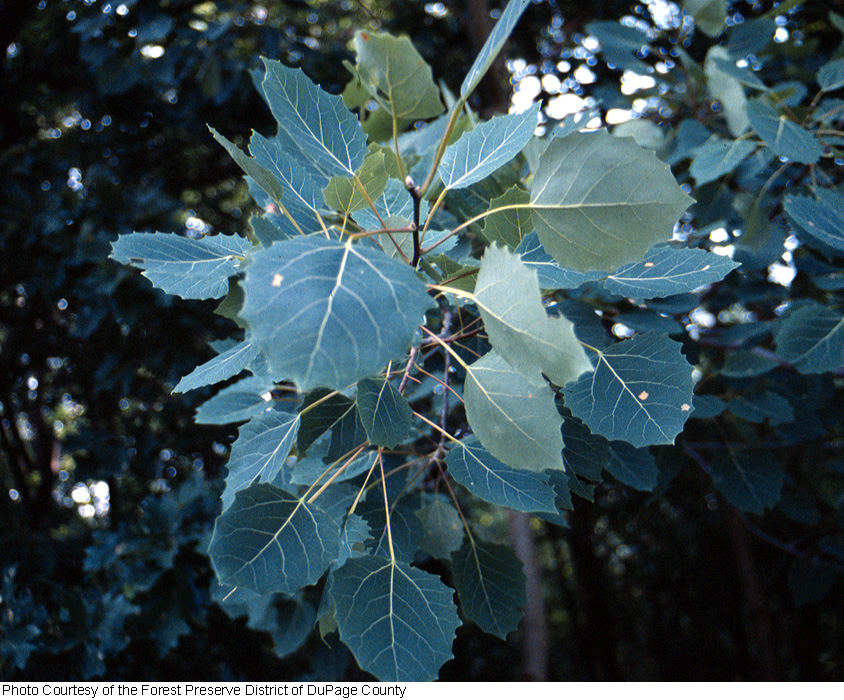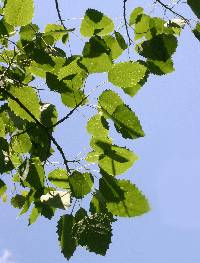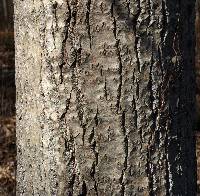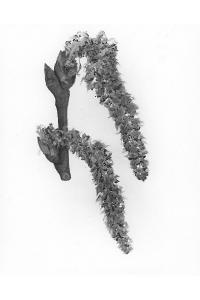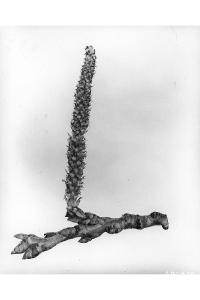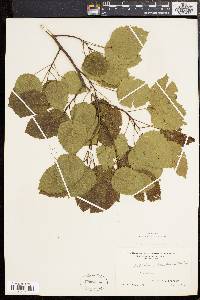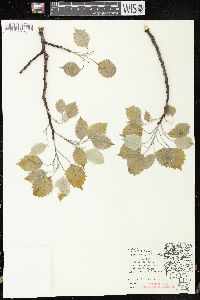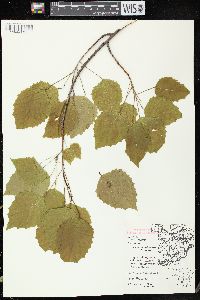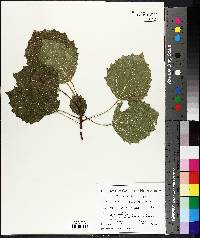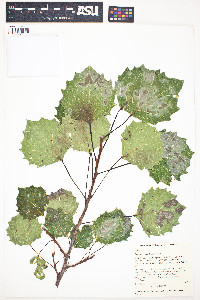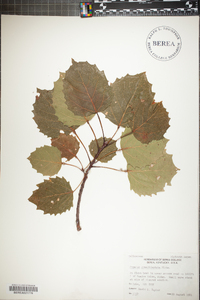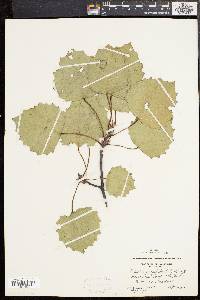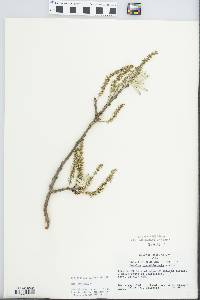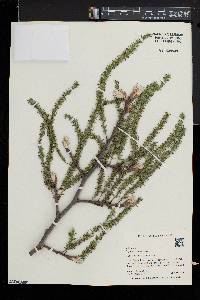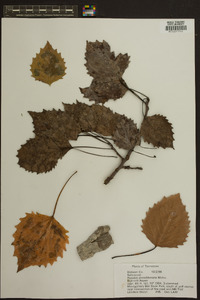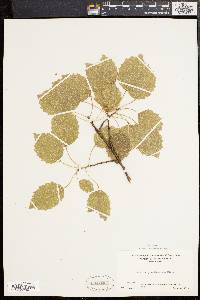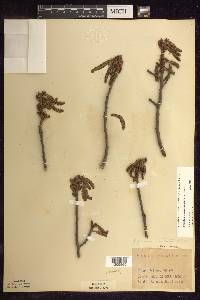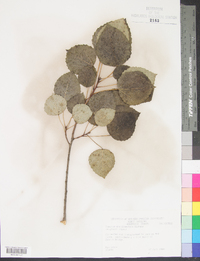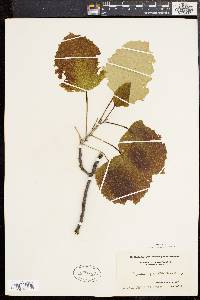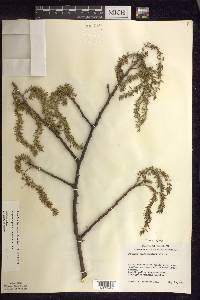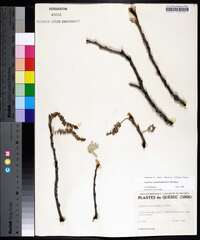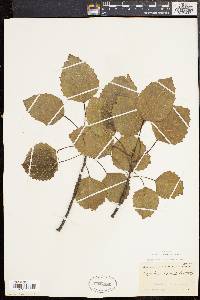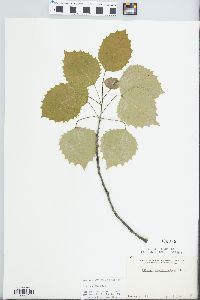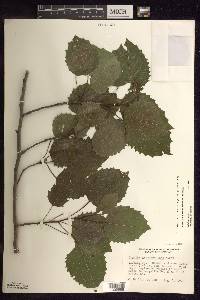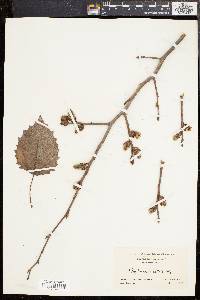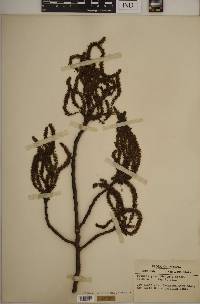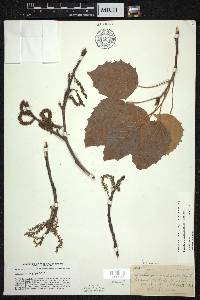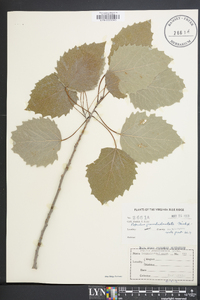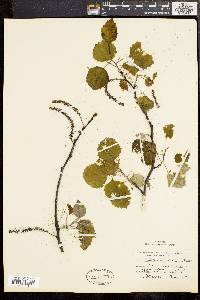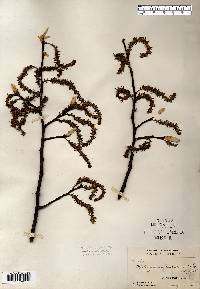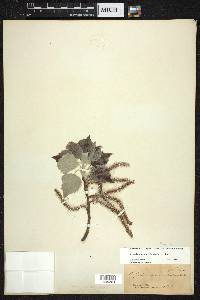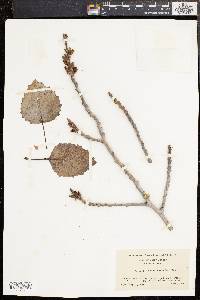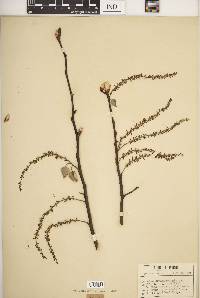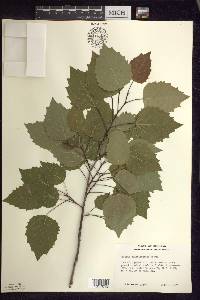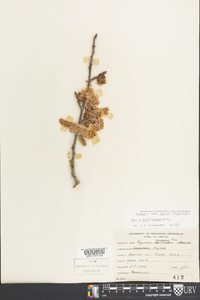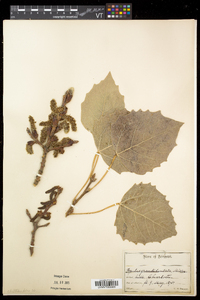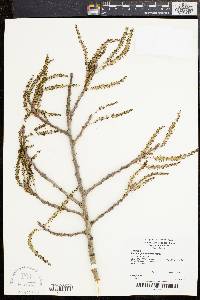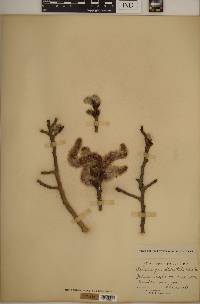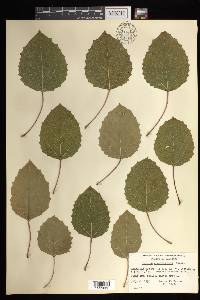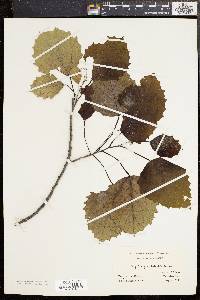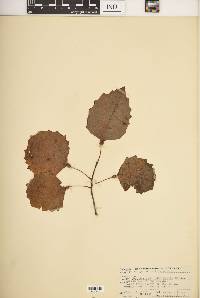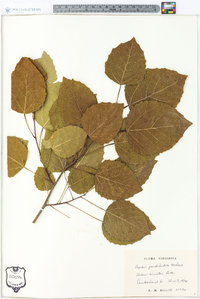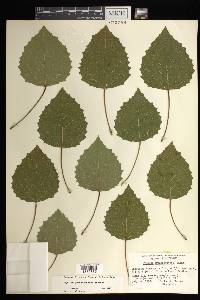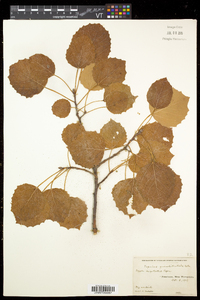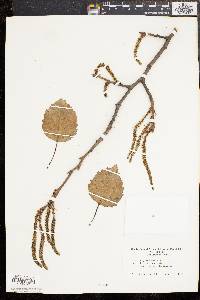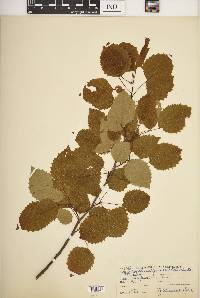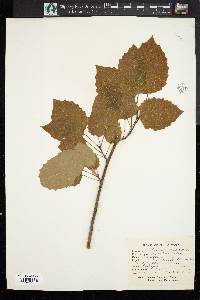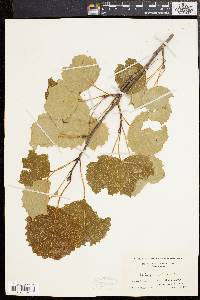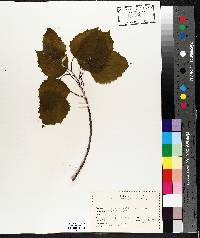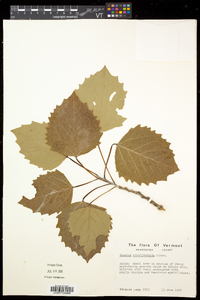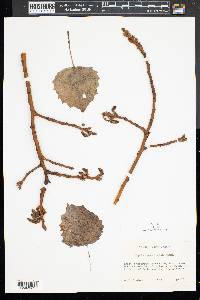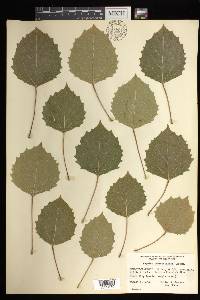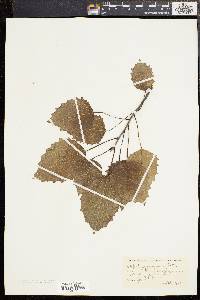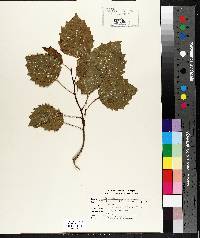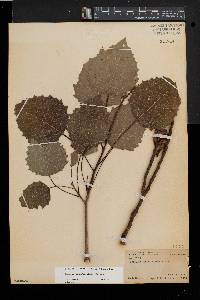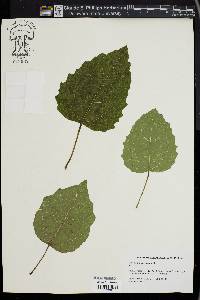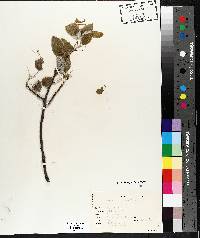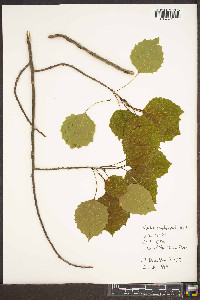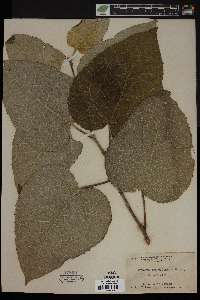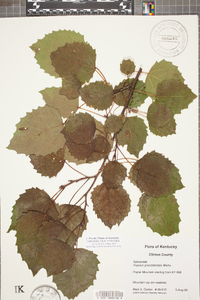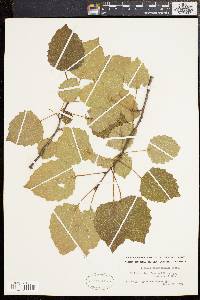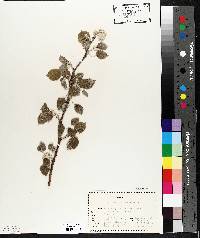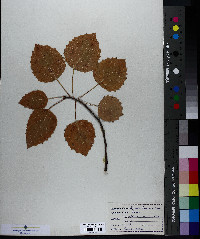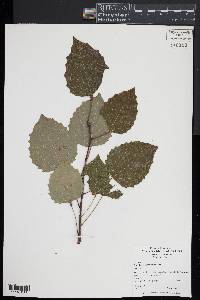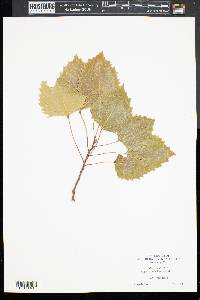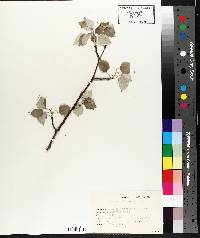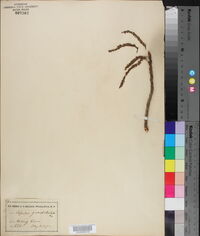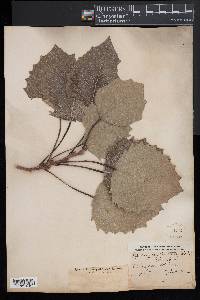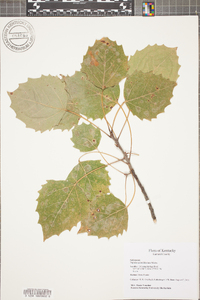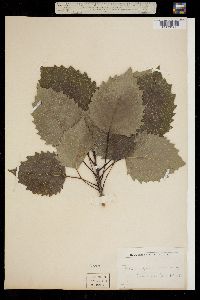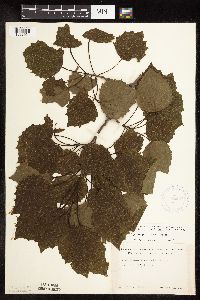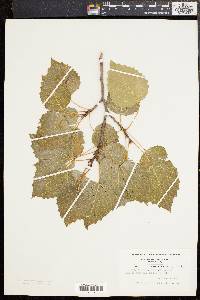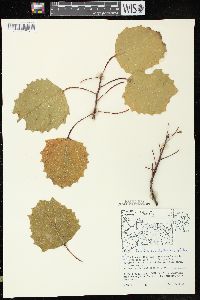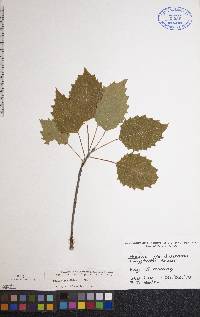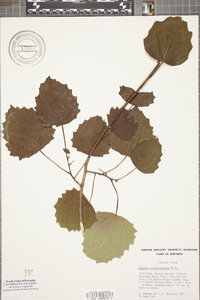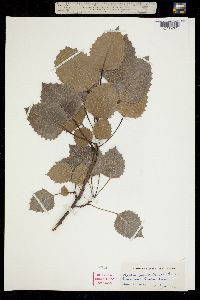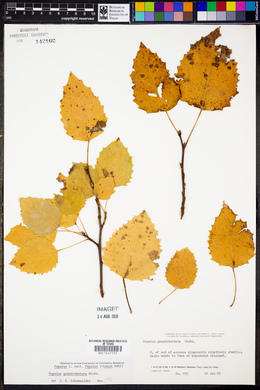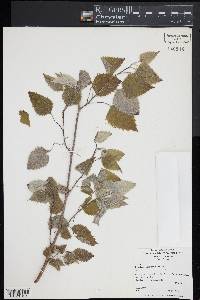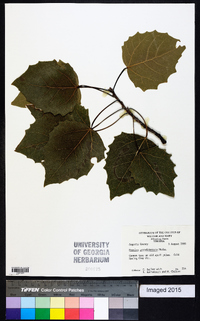
|
|
|
|
Family: Salicaceae
Big-Tooth Aspen, more...bigtooth aspen
[Populus grandidentata f. meridionalis Tidestr., morePopulus grandidentata var. angustata Vict., Populus grandidentata var. meridionalis , Populus grandidentata var. subcordata Vict.] |
Plants to 35 m, 14 dm diam.; strongly heterophyllous. Bark dark grayish brown, furrowed only basally on large trees, (light gray and smooth otherwise). Branchlets reddish brown, becoming reddish gray by third year, round, 1.3-2.5 (-5) mm diam., moderately coarse, thinly tomentose to glabrate. Winter buds reddish, proximally pubescent, (dull), not evidently resinous; terminal buds 2.5-7 (-10) mm, (glabrous or pubescent); flowering buds separated on branchlets or clustered distally, 6-9(-13) mm. Leaves: petiole distally flattened at right angle to plane of blade, 1.5-6(-11) cm, 1/2-3/4 blade length; blade ovate, (2-)4-10(-27.5) × (2-)3-8(-28.5) cm, w/l = 3/4, base broadly cuneate to subcordate, basilaminar glands (1 or) 2(-4), cup-shaped, margins not translucent, not ciliate, apex acute, abaxial surface greenish-white, resin stains absent, (glaucous), densely silky, (hairs white, relatively long, appressed) at emergence, soon becoming glabrate, adaxial bright dark green, glabrous; preformed blade margins coarsely serrate midblade, teeth (1-)5-12 (-16) on each side (graded, sharp), sinuses 0.3-4.5(-6) mm deep; neoformed blade margins finely crenate-serrate throughout, teeth (5-)15-50(-138) on each side (rounded), sinuses 0.8-1.5(-2.5) mm deep. Catkins densely (30-)50-150(-175)-flowered, (4-)6-10(-14 in fruit) cm; floral bract apex deeply cut, ciliate. Pedicels 0.2-1.5(-2 in fruit) mm. Flowers: discs narrowly cup-shaped, obviously oblique, shallowly toothed, 1-2 mm diam.; stamens 6-12; anthers truncate; ovary 2-carpelled; stigmas 2, filiform, erect. Capsules narrowly ovoid, 2-5(-6) mm, glabrous, 2-valved. Seeds (3-)6-8(-9) per placenta. 2n = 38. Flowering Mar-May; fruiting May-Jun. Dry to moist, open to closed upland woodlands and forests; 0-1000 m; Man., N.B., N.S., Ont., P.E.I., Que.; Conn., Del., D.C., Ill., Ind., Iowa, Ky., Maine, Md., Mass., Mich., Minn., Mo., N.H., N.J., N.Y., N.C., Ohio, Pa., R.I., Tenn., Vt., Va., W.Va., Wis. Populus grandidentata is a successional species that regenerates after fires by suckering from living rootstocks. The exclusively neoformed leaves on such suckers are much larger than those found on mature trees, are conspicuously pubescent abaxially, and are similar enough to preformed and neoformed leaves of P. heterophylla that they are responsible for incorrect published reports of the latter in upland sites. Once suckers reach their second or third year and begin to branch, they start to bear at least some preformed leaves that clearly identify them as Bigtooth aspen. As far as is known, P. grandidentata and P. heterophylla never grow together at a single site. Bigtooth aspen hybridizes sporadically with the other native aspen, Populus tremuloides, to form P. ×smithii B. Boivin (synonym P. ×barnesii W. H. Wagner) throughout their large region of sympatry (Frère Marie-Victorin 1930; S. S. Pauley 1956; B. V. Barnes 1961; W. H. Wagner Jr. 1970). Leaves of the hybrids have more numerous, smaller, more rounded teeth than those of P. grandidentata. They may be found as far west as Niobrara River valley, Nebraska, 350 km west of the nearest present station of P. grandidentata. The related Eurasian white poplar, Populus alba Linnaeus, is commonly and widely planted throughout temperate North America as a pistillate clone with a spreading crown or, less often, as a columnar staminate clone, the Bolleana poplar (`Pyramidalis´), both of which can persist after cultivation and even spread to a limited extent by root sprouts in old garden sites, roadsides, waste places, hedgerows, and edges of woods. This species differs from P. grandidentata (and all other species of the genus) in having neoformed leaf blades palmately 5-lobed and, along with the petioles, densely white-tomentose abaxially. Unlike all native species of Populus, white poplar has floral bract apices only shallowly cut; these are ciliate like those of native aspens. Populus alba hybridizes commonly with both P. grandidentata, forming P. ×rouleauiana B. Boivin, and P. tremuloides, forming P. ×heimburgeri B. Boivin, in southeastern Canada and the northeastern United States; the hybrids are progressively uncommon southward (E. L. Little Jr. et al. 1957; T. A. Spies and B. V. Barnes 1982). Although their leaves are tomentose abaxially, they differ from Medium-sized to large tree 18 - 32 m tall, trunk diameter 30 cm - 0.5 m Leaves: alternate, with 7.5 cm long, flattened leafstalks (enabling leaf to tremble in the breeze). The blade is green above, paler beneath, 7 - 13 cm long, 5 - 9 cm wide, and egg-shaped to nearly circular with a rounded base and short-pointed tip. It is also large-toothed (six to fifteen teeth per side), thin, firm, and hairless (densely hairy beneath when young). In autumn the leaves turn yellow and orange. Flowers: either male or female, borne on separate trees (dioecious) in hairy-bracted catkins. Male catkin 3 - 8 cm long and hairy with red anthers. Female catkin loose-flowered, 3 - 8 cm long, slender, and hairy with scarlet stigmas. Fruit: a two-valved capsule, borne in 8 - 15 cm long drooping catkins, green, 6 mm long, narrow, flask-shaped, slightly hairy. Seeds brown with cottony hairs attached. Bark: thin, grayish green (sometimes with an orange cast), and smooth on young trees, becoming dark gray and irregularly fissured, with broad, flat-topped ridges. Twigs: stout, grayish green, and hairy when young, becoming hairless with age. Leaf scars raised, triangular, with three bundle scars each. Buds: light chestnut-brown, dusty looking, 3 mm long, egg-shaped, pointed, somewhat hairy, widely divergent from stem. Terminal bud up to 1 cm long. Form: rounded. Similar species: The similar Populus balsamifera and P. heterophylla differ by having rounded, not flattened leafstalks. Populus alba differs by having hairy leaves and leafstalks. For comparison, the similar leaves of P. tremuloides are smaller (usually under 7 cm long) and bear many small rounded teeth. Flowering: late March to mid-May, as the leaves unfold Habitat and ecology: Generally found in moist to dry habitats, including woodland edges, wooded slopes, ravines, and sandy areas. It is most frequent on gentle slopes and is typical of the glacial lake area in the northwestern sector of the region. Occurence in the Chicago region: native Notes: The wood of Populus grandidentata is used for pulp, plywood, veneer, furniture, interior trim, excelsior, boxes, crates, and matches. Populus species as a whole are subject to many diseases and insect pests, such as canker and tent caterpillars, which often kill the tree or make it unattractive. These risks, in conjunction with a water-hungry root system, have made Populus species less desirable for landscape use. Etymology: Populus is the Latin word for poplar. Grandidentata means "having big teeth." Author: The Morton Arboretum Tree with light greenish-gray bark (darker than no. 3), becoming dark brown and furrowed in age; petioles strongly flattened; terminal buds dull brown, finely hairy; lvs tomentose-puberulent when young, especially beneath, later glabrous, dark green above, pale and glaucous beneath, often with a pair of basal glands, mostly 5-12 cm, the lowest veins strongly ascending as in no. 3 [Populus tremuloides Michx.]; lvs of short shoots coarsely and remotely toothed, with mostly 5-12 large, projecting teeth (the largest ones 1.5-6 mm deep) on each side; lvs of long shoots often with smaller and more numerous teeth; scales of catkins shallowly cleft into 5-7 lance-triangular lobes; stamens 5-12; stigmas 2, linear, bifid; frs slenderly conic, 3-5 mm, on pedicels 1-2 mm, with 5-8 seeds per placenta; 2n=38. Upland woods, often in drier soil than no. 3 [Populus tremuloides Michx.]; N.S. to Minn., s. to N.C., Tenn., and n. Mo., abundant northward. A hybrid with no. 3 is P. آarnesii W. H. Wagner, or P. سmithii B. Boivin. Gleason, Henry A. & Cronquist, Arthur J. 1991. Manual of vascular plants of northeastern United States and adjacent Canada. lxxv + 910 pp. ©The New York Botanical Garden. All rights reserved. Used by permission. From Flora of Indiana (1940) by Charles C. Deam This is a tree of small or medium size found more or less frequently in the lake area and less frequently in the unglaciated area. Outside these areas it is local or absent. In the northern part of the state it is found in low ground while in the unglaciated area it is usually found on the crests of the highest ridges. …… Indiana Coefficient of Conservatism: C = 4 Wetland Indicator Status: FACU |

